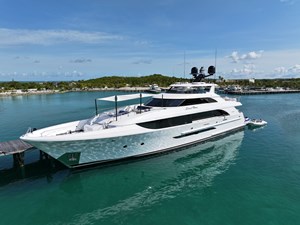
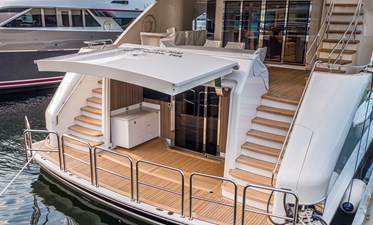
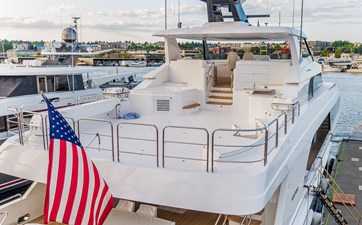
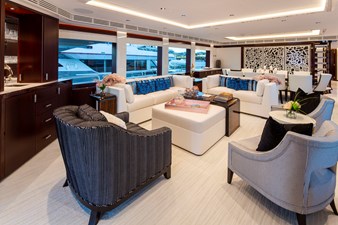
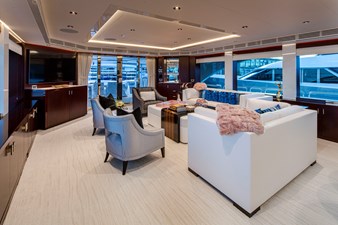
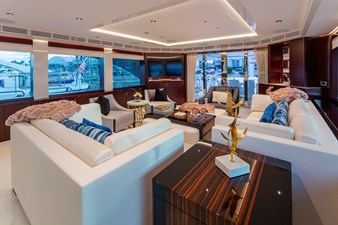
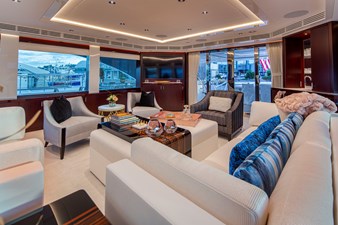
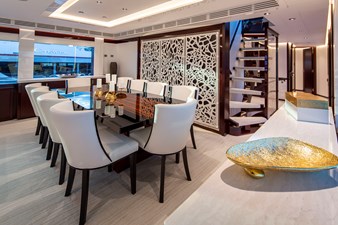
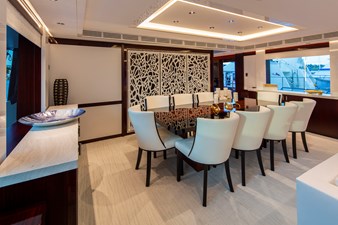
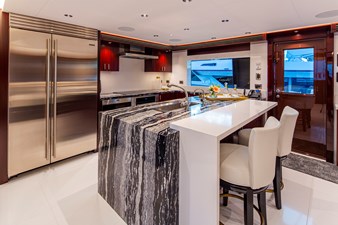
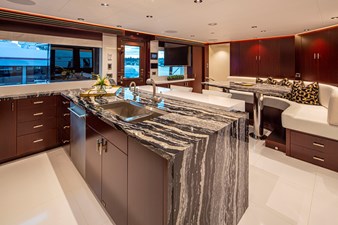
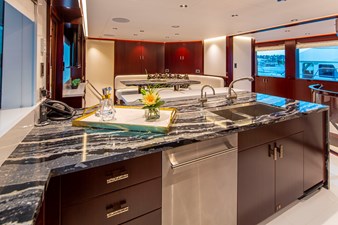
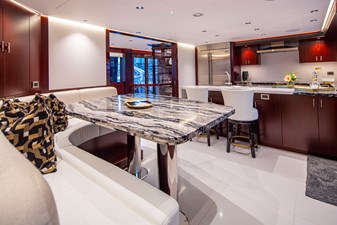
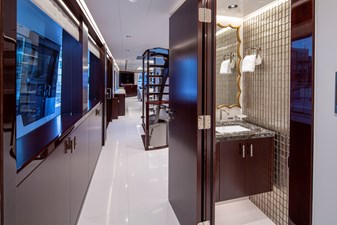
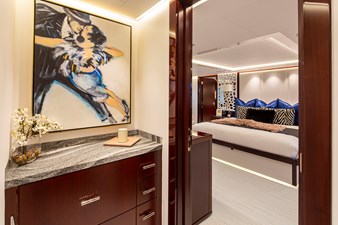
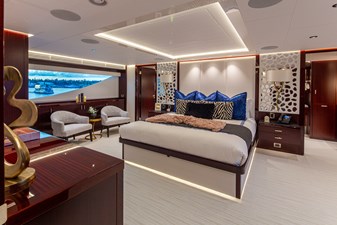
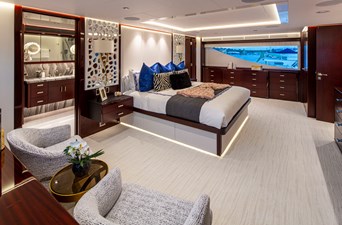
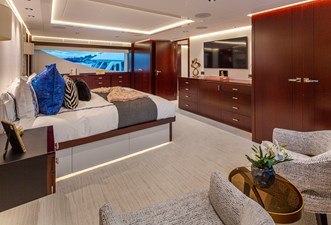
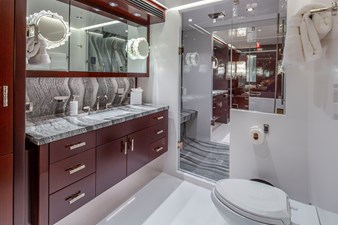
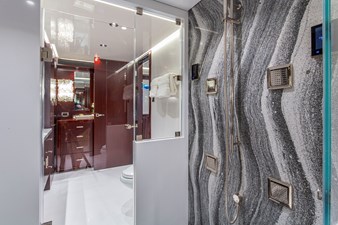
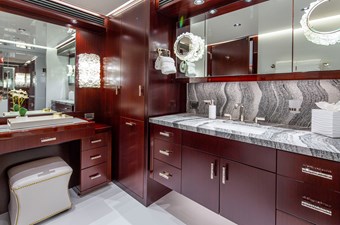
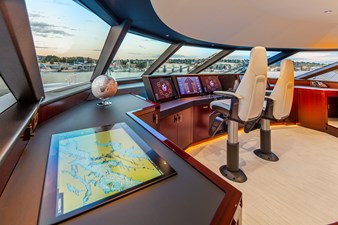
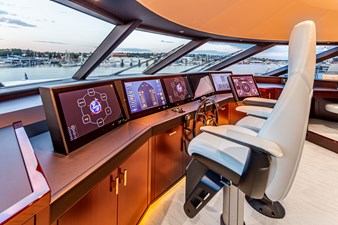
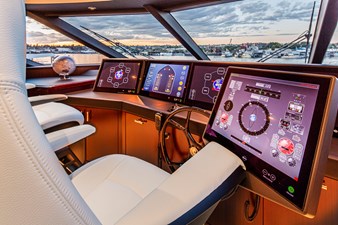
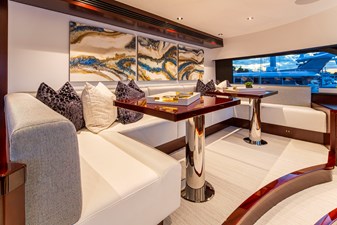
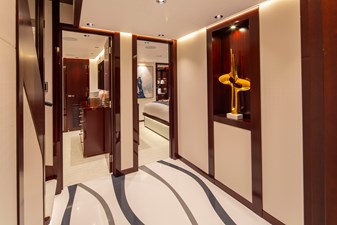
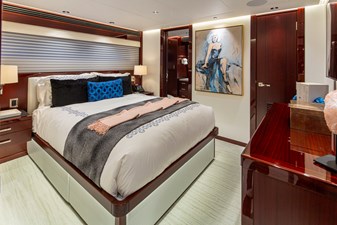
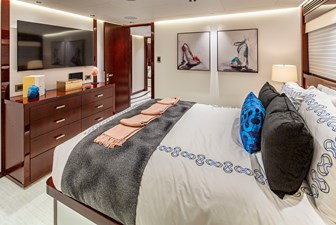
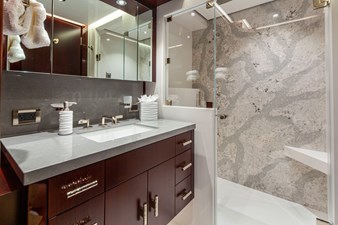
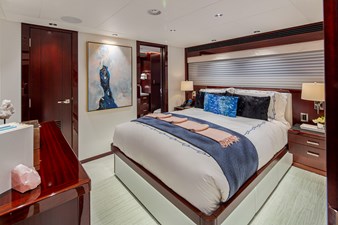
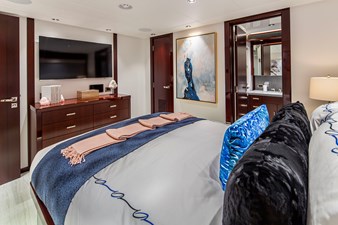
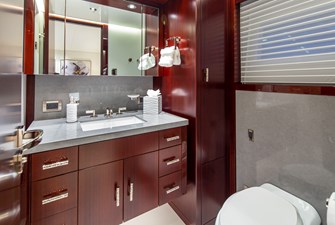
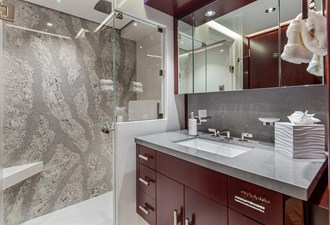
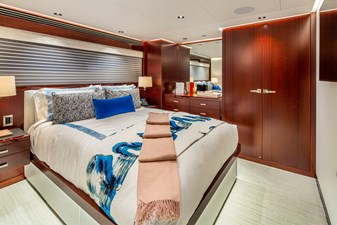
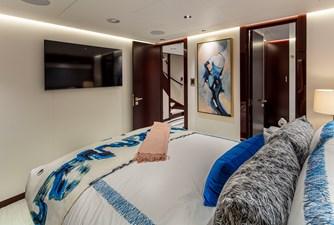
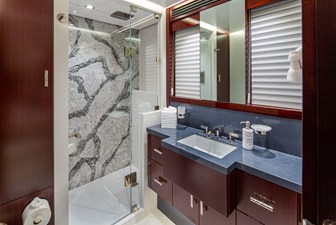
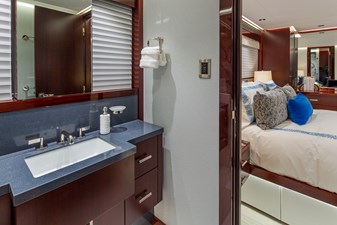
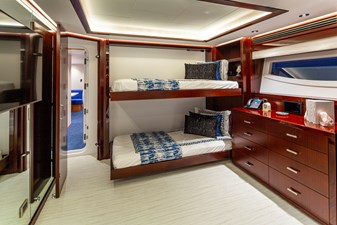
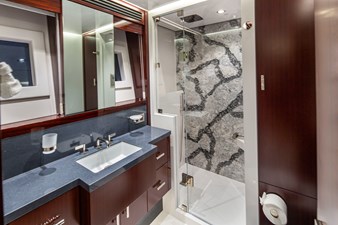
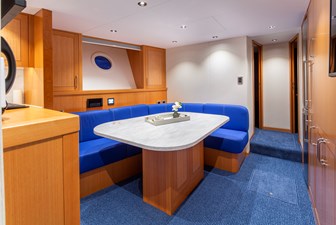
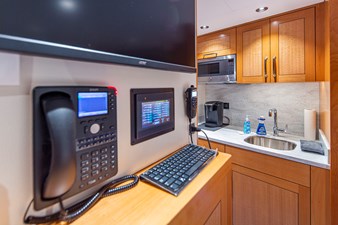
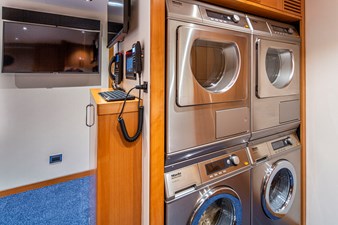
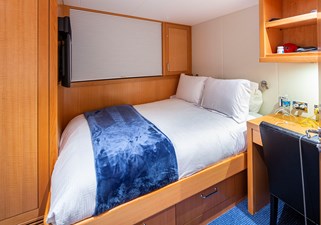
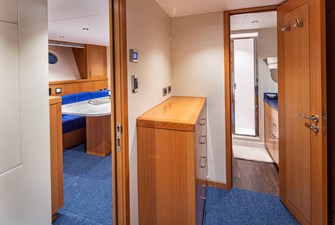
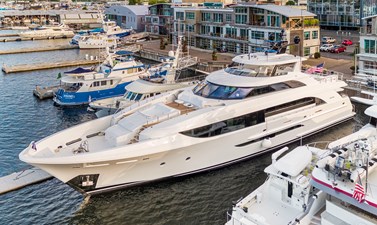
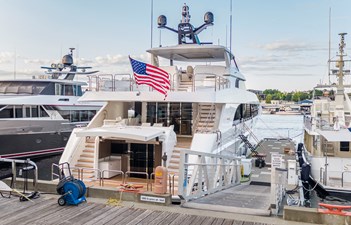
The WESTPORT 125 LION’S DEN represents the pinnacle of American yacht craftsmanship, seamlessly blending timeless design, cutting-edge technology, and luxurious comfort. Built by the renowned Westport Shipyard in Washington State, USA; LION’S DEN is a 125-foot (38.1 meter) semi-displacement motoryacht that delivers world-class performance with the refinement and attention to detail that Westport is known for. Her interior was designed by Destry Darr.
"*" indicates required fields
"*" indicates required fields














































The WESTPORT 125 LION’S DEN represents the pinnacle of American yacht craftsmanship, seamlessly blending timeless design, cutting-edge technology, and luxurious comfort. Built by the renowned Westport Shipyard in Washington State, USA; LION’S DEN is a 125-foot (38.1 meter) semi-displacement motoryacht that delivers world-class performance with the refinement and attention to detail that Westport is known for. Her interior was designed by Destry Darr.
Launched in 2020, LION’S DEN features a sleek, contemporary profile and spacious, open-plan interiors, making her ideal for both private family cruising and high-end charter experiences. With accommodations for up to 10 guests in 5 beautifully appointed staterooms—including a full-beam master suite—this yacht offers a harmonious blend of elegance and comfort.
LION’S DEN is powered by twin MTU Engines, the WESTPORT 125 cruises comfortably at 20 knots with a top speed of approximately 25 knots, ensuring swift and smooth travel between destinations. Her advanced stabilization system enhances onboard comfort at anchor and underway.
Whether entertaining on the expansive sundeck, relaxing in the plush main Salon, or exploring coastal waters with a full suite of water toys, LION’S DEN delivers an exceptional yachting experience. She is a prime example of Westport’s commitment to quality, performance, and sophisticated design.
MAIN ENGINES HAVE EXTENDED WARRANTY UNTIL DECEMBER 3, 2029 OR 6,000 HOURS, WHICHEVER COMES FIRST!
A RARE OPPORTUNITY TO OWN A LATE MODEL WESTPORT 125 IN PRISTINE CONDITION CURRENTLY ON THE MARKET! NO EXPENSE HAS BEEN SPARED ON HER MAINTENANCE!
A Hydraulically actuated sliding platform extends aft from the center of the Swim Step five feet when deployed. The platform incorporates fold-down swim ladders port and starboard
Utility Room – Located Aft:
Navigational Aids:
Position and charting equipment consists of redundant hardware and multiple power sources to maximize reliability and availability. Dual radars are heading stabilized for ARPA.
Marine Technologies chart plotting system provides professional level offshore navigation capability with superior system stability. Nobeltec TZ chart plotting system with radar overlay provides coastal navigation tools with excellent charting database and bathymetric data for coastal cruising
System components include:
External Communication Systems:
Internal Communication Systems:
System components include:
Wing Station Components include:
Joiner Work:
Sapele, a rich red/brown tone hardwood of the Mahogany family, is used as the primary wood in public areas and Guest accommodation spaces. Accent pieces display veneer work in Sapele Pommele, a cut of the Sapele log showing highly figured grain patterns. Crew areas are constructed using Beech hardwoods and Anigre veneers, providing a light finish tone. Joinery finish system employs a full Epoxy grain fill to seal the wood and a Polyurethane top coat. Finish sheen is primarily satin with high-gloss accents on selected trim pieces and tops
Window Treatments:
Sheer cellular window coverings are provided throughout the Main Deck and Lower Deck accommodations. Black-out blinds are also provided in the Master and Guest Staterooms. Blinds are power operated and controlled through the Crestron System
Lighting:
LED Overhead lighting is used throughout the vessel. Lighting is controlled with the Crestron System. Accent and task light fixtures are selected to complement the individual vessel's décor
Deck surfaces include:
Exterior Fittings & Equipment:
Exterior Lighting:
Heads:
Propulsion System:
(2) 16-Cylinder Marine Diesel Engines Drive custom 5-blade propellers through close-coupled, down- angle reduction gears and stainless steel shafts. Engine vibration is isolated through the use of resilient mounts
Seawater cooling is supplied through dual 5 inch copper-nickel lines connected to integrally molded hull scoops through bronze Y-strainers and butterfly valves. Primary main engine exhaust exits the hull underwater at chine while silenced bypass exits at transom corners
System components include:
Steering System:
Digital hydraulic power steering is provided. Power is provided by engine-driven hydraulic pumps on both main engines
Main Pilothouse and Flybridge steering stations include full follow-up helm wheels, non-follow-up jog levers and rudder angle indicators
Port and starboard wing stations include non-follow-up jog levers and rudder angle indicators
System components include:
Gyro Stabilizer System:
Stabilization at rest is provided by an electrically powered gyro system. Two gyros are installed on centerline in the Lazarette
Gyros: (2) Seakeeper Model 35
Fin Stabilizer System:
Stabilization underway is provided by a hydraulically powered fin system and supplemented by the gyro system Actuators and fins are installed port and starboard amidships
Underway power is provided by a main engine-driven hydraulic pump. Control system located in the Pilothouse
System components include:
HVAC System:
Interior temperature and humidity is maintained by a chilled water HVAC system with a 30 ton cooling capacity. Air handlers of various BTU ratings are mounted behind cabinets and bulkheads throughout the vessel. Air handlers in all accommodation spaces are fitted with electric heating elements for autonomous heating. Fresh air makeup is provided by dedicated air handlers
System components include:
Hydraulic System:
Hydraulic equipment is powered by electrically driven power packs. An aft power pack serves the Passerelle, davit, transom door and Swim Step Beach Platform. A forward power pack serves the anchor windlasses
Bow Thruster:
The Bow Thruster is mounted in a composite tunnel integrally laminated into the hull structure. It is electrically driven with power provided from the ship’s AC system thru a step-up transformer and variable frequency drive
Thruster: 16” ABT unit with dual counter-rotating propellers
Motor: 75 HP, 3-Phase, 480 VAC
Diesel Fuel System:
Total diesel fuel capacity is approximately 7,065 US gallons in five tanks
Day tank and port and starboard wing tanks are immediately forward of the Engine Room. Two bilge tanks are located under the sole forward. One bilge tank located aft
Tanks are of welded aluminum construction
Tank levels are monitored by electronic sensors and displayed on the vessel monitoring system. Mechanical back-up level measurement is provided
Engines and generators draw from the day tank through filter sets and are provided with fuel priming pumps
Fill locations are on the port and starboard aft Main Deck house sides. Starboard side includes fill to manifold
System components include:
Lube Oil System:
Main engine and generator lube oil tanks are installed in the Engine Room
New and used oil tank capacities are 58 US gallons each
Portable AC-powered pump is provided for oil transfer. Used oil is discharged through quick-disconnect fitting at the Stern
Fuel System:
A 100 US gallon tank is provided
Fuel hose and nozzle are contained in a vapor-tight compartment. Vapor detector provided
Fresh Water System:
Total fresh water capacity is 1,000 US gallons in one tank divided into two equal, isolated partitions. Tank construction is welded stainless steel.
(3) AC Supply pumps are plumbed to suction and distribution manifolds enabling service isolation of tanks and pumps while system remains operational. Dock pressure fill location at starboard bustle
Freshwater wash down spigots are located on external decks
System components include:
Waste Water System:
Black water tank capacity is approximately 1,050 US gallons. Tank is of FRP construction
Toilets and Galley sink discharge to the black water tank (Galley sink fitted with direct overboard option for use in approved locations). Dockside black water tank pump-out connection is located in the port bustle. Where permitted, black water can be treated by the onboard marine sanitation device (MSD) for overboard discharge. Gray water from sinks, showers, etc. is sent directly overboard, or can be routed to the black water tank when required
Tank levels are monitored on the vessel monitoring system. Black water tank includes salt water wash out from fire main
System components include:
Compressed-Air System:
Compressed-Air System powers ship’s whistle and air tools. Quick connect fittings are provided on Bow, Boat Deck and in Utility Room for operation of power tools and inflation of tenders, fenders, etc. Retractable hose reel is provided in the Engine Room
System components include:
Bilge System:
The five watertight compartments are fitted with alarms for the presence of water and are monitored on the Vessel Monitoring System. Primary pump is located in the Engine Room. Through a common manifold the auxiliary pump outside Engine Room provides backup bilge pumping ability
System components include:
Deck Drain System:
All exterior decks are fitted with freeing ports and/or deck drains. Deck drains are integrally molded into the composite decks are fitted with stainless steel grates. Drains are plumbed internally to laminated through-hulls located at the boot stripe
Generators:
(2) Northern Lights Generators, M80A13, 80 kW, 1800 RPM provide 208 volt/3 phase/60 cycle AC power. Generator exhausts exit the hull at the transom corners. Generator noise and vibration is isolated through the use of sound enclosures and compound resilient mounts
Shore Power:
Connection to shore power is made through (2) shore cords at the stern of the vessel. System can accept single or three-phase power; from 180 to 520V and 47 to 64Hz. Cords are handled through a Powered Deployment and Retraction System
System components include:
AC Electrical Distribution:
AC Service from shore power and generators is routed to a main distribution electrical panel in the Control Room, then to subpanels located throughout the vessel. Wiring is four-wire three-phase 208 volts with 120 volt single-phase branch circuits where required
Main distribution panel is constructed of extruded aluminum with powder coat finish, built to IP20 level of protection and incorporates forced-draft cooling. Main panel displays a full gauge package for all sources including volts/amps of each line, phase, power, power factor and frequency
Distribution system is designed for parallel operation between generators. Main distribution panel includes a seamless transfer feature for uninterrupted power output during switchover between generator/s and shore power
DC Electrical System:
24VDC Power is supplied by (4) banks of absorbed glass matt (AGM) batteries: house bank, port and starboard main engine start banks and generator start bank
House bank power is distributed through the main electrical distribution panel to sub panels and powers emergency lighting and navigation electronics. Each battery bank is equipped with an independent battery charger
System components include:
Primary Structure:
Hull, superstructure and decks are of foam-cored composite construction with E-glass reinforcements in Vinylester resin. Core material and density varies throughout to optimize engineered structures
Structural framing combines E-glass and carbon fiber reinforcements in Vinylester resin. The structure is engineered to American Bureau of Shipping rules
Exterior Finishes:
Hull and superstructure are finished in Alexseal “Snow White” high-gloss Urethane paint. Mast is finished in Alexseal “Super Jet Black” high-gloss Urethane paint
Boot stripe is applied with high-gloss Acrylic paint in gloss black
Hull bottom coating is black Sea Hawk anti-fouling paint over an Epoxy barrier coat
Windows:
Superstructure side and Pilothouse front windows are frameless, tempered glass, direct bonded to the vessel structure with a Structural Adhesive System
Portlights and hull windows are toughened, laminated glass, direct bonded to recesses integrally molded into the hull
Noise and vibration reduction measures are engineered by Westport and consultants. Engine Room acoustic insulation is integrated with the fire insulation package. It is composed of an aluminum plate reflective barrier, absorptive layers and structural damping materials. Machinery vibration is isolated through the use of resilient mounts Interior spaces are treated with sound-tight construction techniques to prevent noise transmission between compartments as well as floating joinery connections, acoustic insulation and damping materials to suppress the transmission of structure-borne noise and vibration
VIC2 is a Proprietary Westport Monitoring and Alarm System that identifies and provides visibility to critical vessel function and safety information on a single screen in the Pilothouse. System is based on a 24 volt redundant architecture to provide robust reliability in both normal operation and emergency situations. Hardware includes a dedicated network of “human machine interface” (HMI) touch screens strategically located throughout the vessel to aid the crew in efficient alarm recognition
Features include:
Fire Hydrant System:
(4) Fire Stations are provided, each containing a hose, angle valve and hi/lo volume nozzle. Aux pump 1 is located in the Utility Room and aux pump 2 located in Engine Room. Through a common manifold the aux pumps provide redundant firefighting capability
System components include:
Engine Room Fire Protection System:
FM200 Fire Suppression System is provided for the Engine Room. Automatic activation includes delay and alarm prior to discharge of suppressant. Activation triggers automatic shutdown of fuel pumps, intake fans, main engines and generators and closure of Engine Room ventilation dampers
Engine Room and Engine Room ventilation ducts are insulated to meet an A-30 fire protection rating also providing thermal and acoustic isolation
Line handling is assisted by integrated capstans on the Foredeck windlasses and electrically powered capstans on the Aft Deck
(12) Double horn bitts and hawse rings are provided, (2) on each side of the Foredeck, (2) on each Side Deck, (1) on each side of the Aft Deck and (1) on each side of the Swim Step
System components include:
(2) “Poole” style anchors are stowed in recessed stainless steel pockets on the Bow, port and starboard
Dual hydraulic windlasses on the Foredeck provide independent operation of the two anchors. Chain is stowed in chain locker bins below the Foredeck. Anchor wash down nozzles are installed in the hawse pipes and are supplied with pressurized seawater from the Fire Hydrant System
System components include:
LION’S DEN is a registered name and does not convey.
Exclusions are to include but are not limited to, all owner’s personal items. A detailed list of exclusions will be provided at the time of sale, upon written request.







